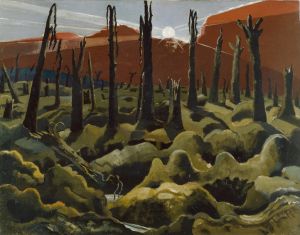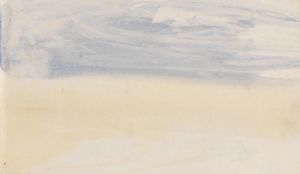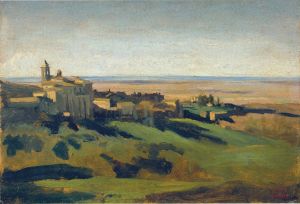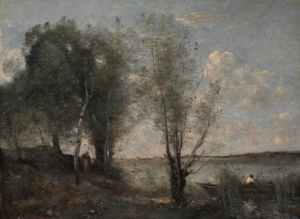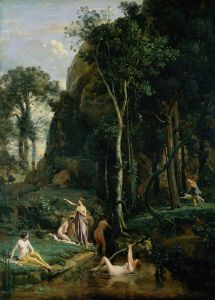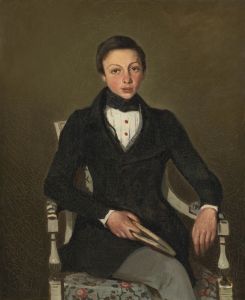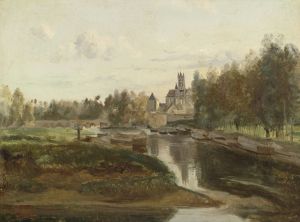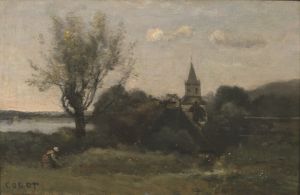
Vallée Solitaire
A hand-painted replica of Jean-Baptiste-Camille Corot’s masterpiece Vallée Solitaire, meticulously crafted by professional artists to capture the true essence of the original. Each piece is created with museum-quality canvas and rare mineral pigments, carefully painted by experienced artists with delicate brushstrokes and rich, layered colors to perfectly recreate the texture of the original artwork. Unlike machine-printed reproductions, this hand-painted version brings the painting to life, infused with the artist’s emotions and skill in every stroke. Whether for personal collection or home decoration, it instantly elevates the artistic atmosphere of any space.
Jean-Baptiste-Camille Corot's Vallée Solitaire (translated as "Solitary Valley") is a painting attributed to the renowned French landscape artist, who was a pivotal figure in 19th-century art. Corot is widely recognized for his contributions to the Barbizon School and as a precursor to Impressionism, blending classical traditions with naturalistic depictions of the landscape.
Vallée Solitaire exemplifies Corot's characteristic style, which often merges realistic observation with a poetic and atmospheric quality. The painting likely depicts a tranquil, rural scene, reflecting Corot's deep appreciation for nature and his ability to evoke a sense of serenity and introspection. His works often feature soft, diffused light and a harmonious balance between foreground and background elements, creating a dreamlike quality that became a hallmark of his art.
Corot's landscapes were often inspired by his travels throughout France and Italy, where he sketched extensively en plein air (outdoors) before completing his works in the studio. While specific details about the location or context of Vallée Solitaire are not readily available, it is consistent with his broader oeuvre, which frequently includes pastoral settings, quiet valleys, and solitary figures or structures that enhance the contemplative mood of the scene.
The painting's composition and execution reflect Corot's mastery of tonal variation and his ability to capture the subtleties of light and atmosphere. His use of muted colors and delicate brushwork creates a sense of depth and timelessness, inviting viewers to immerse themselves in the peaceful solitude of the depicted landscape.
Corot's influence on later artists, particularly the Impressionists, cannot be overstated. His innovative approach to capturing the natural world, combined with his sensitivity to mood and emotion, helped pave the way for new artistic movements in the late 19th and early 20th centuries. While Vallée Solitaire may not be among his most famous works, it remains a testament to his enduring legacy as one of the great landscape painters of his time.
Further research may be required to provide additional details about the painting's provenance, current location, or specific historical context.






